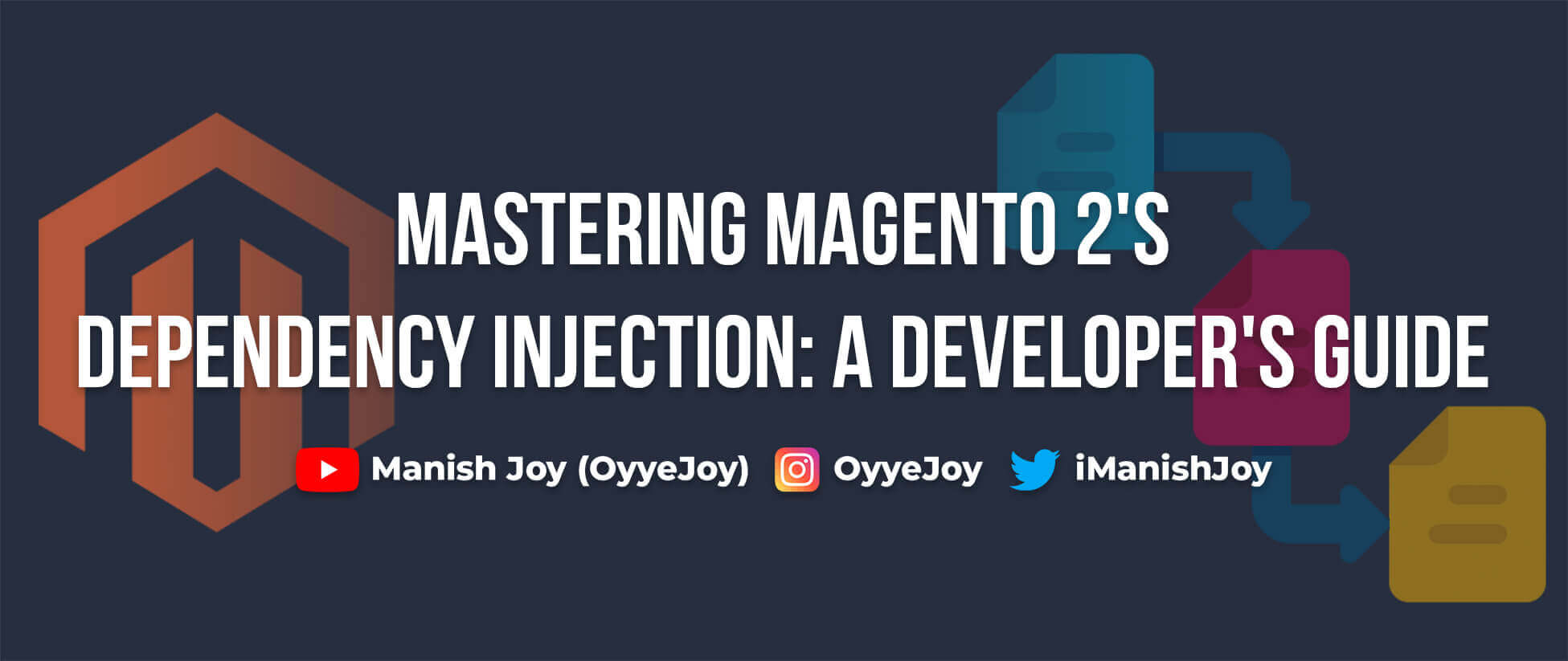Mastering Magento 2’s Dependency Injection: A Developer’s Guide
Magento 2’s architecture heavily relies on Dependency Injection (DI), a design pattern that allows developers to achieve loose coupling and better manage dependencies within their applications. Understanding and extending Magento 2’s DI framework is crucial for any developer aiming to create robust and maintainable customizations.
What is Dependency Injection?
Dependency Injection is a design pattern used to implement IoC (Inversion of Control), allowing a class to declare its dependencies without creating them. This is achieved by injecting these dependencies, typically through constructors, setters, or interface injection.
Why Use Dependency Injection in Magento 2?
- Loose Coupling: DI promotes loose coupling by separating the creation of a dependency from its behavior.
- Flexibility: It allows for easy swapping of implementations, which is beneficial for testing and maintenance.
- Scalability: Simplifies the management of complex dependencies in large applications.
Understanding Magento 2’s DI Configuration
Magento 2 uses XML files to configure DI. These configurations are defined in di.xml files located in various module directories. The main configuration file can be found in:
app/code/Vendor/Module/etc/di.xml
Defining Dependencies in di.xml
Dependencies can be defined in the di.xml file using <type>, <virtualType>, <preference>, and <plugin> tags.
Example 1: Type Configuration
<?xml version="1.0"?>
<config xmlns:xsi="http://www.w3.org/2001/XMLSchema-instance" xsi:noNamespaceSchemaLocation="urn:magento:framework:ObjectManager/etc/config.xsd">
<type name="Vendor\Module\Model\Example">
<arguments>
<argument name="dependency" xsi:type="object">Vendor\Module\Model\Dependency</argument>
</arguments>
</type>
</config>
In this example, the Vendor\Module\Model\Example class declares a dependency on Vendor\Module\Model\Dependency.
Example 2: Preference Configuration
Preferences allow you to specify an implementation for an interface or a class.
<?xml version="1.0"?>
<config xmlns:xsi="http://www.w3.org/2001/XMLSchema-instance" xsi:noNamespaceSchemaLocation="urn:magento:framework:ObjectManager/etc/config.xsd">
<preference for="Vendor\Module\Api\Data\ExampleInterface" type="Vendor\Module\Model\Example"/>
</config>
This configuration tells Magento to use Vendor\Module\Model\Example whenever Vendor\Module\Api\Data\ExampleInterface is requested.
Extending Dependency Injection
To extend the DI configuration, you might want to add plugins, interceptors, or modify existing services.
Example 3: Adding a Plugin
Plugins (also known as interceptors) allow you to modify the behavior of public methods in classes.
<?xml version="1.0"?>
<config xmlns:xsi="http://www.w3.org/2001/XMLSchema-instance" xsi:noNamespaceSchemaLocation="urn:magento:framework:ObjectManager/etc/config.xsd">
<type name="Magento\Catalog\Api\ProductRepositoryInterface">
<plugin name="example_plugin" type="Vendor\Module\Plugin\ProductRepositoryPlugin"/>
</type>
</config>
The Vendor\Module\Plugin\ProductRepositoryPlugin class can now intercept method calls on Magento\Catalog\Api\ProductRepositoryInterface.
Example Plugin Class
<?php
namespace Vendor\Module\Plugin;
class ProductRepositoryPlugin
{
public function beforeGetById(
\Magento\Catalog\Api\ProductRepositoryInterface $subject,
$productId
) {
// Code to execute before the getById method
}
public function afterGetById(
\Magento\Catalog\Api\ProductRepositoryInterface $subject,
$result
) {
// Code to execute after the getById method
return $result;
}
public function aroundGetById(
\Magento\Catalog\Api\ProductRepositoryInterface $subject,
callable $proceed,
$productId
) {
// Code to execute around the getById method
$result = $proceed($productId);
return $result;
}
}
Conclusion
Mastering Dependency Injection in Magento 2 is essential for developing scalable, maintainable, and flexible customizations. By understanding how to configure DI through di.xml and leveraging the power of plugins and preferences, you can significantly enhance the capabilities of your Magento 2 store.
Liked the post, share with others:




